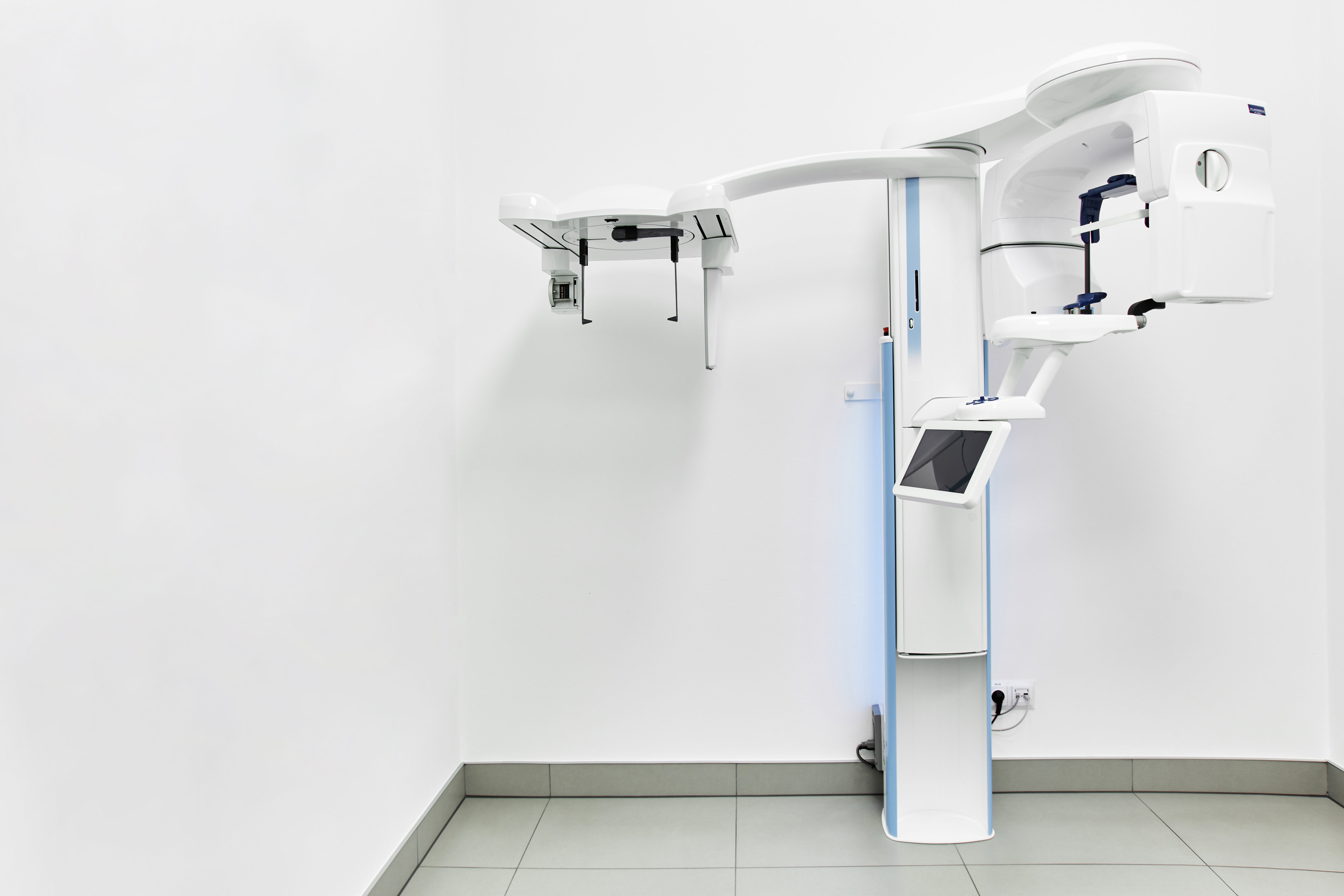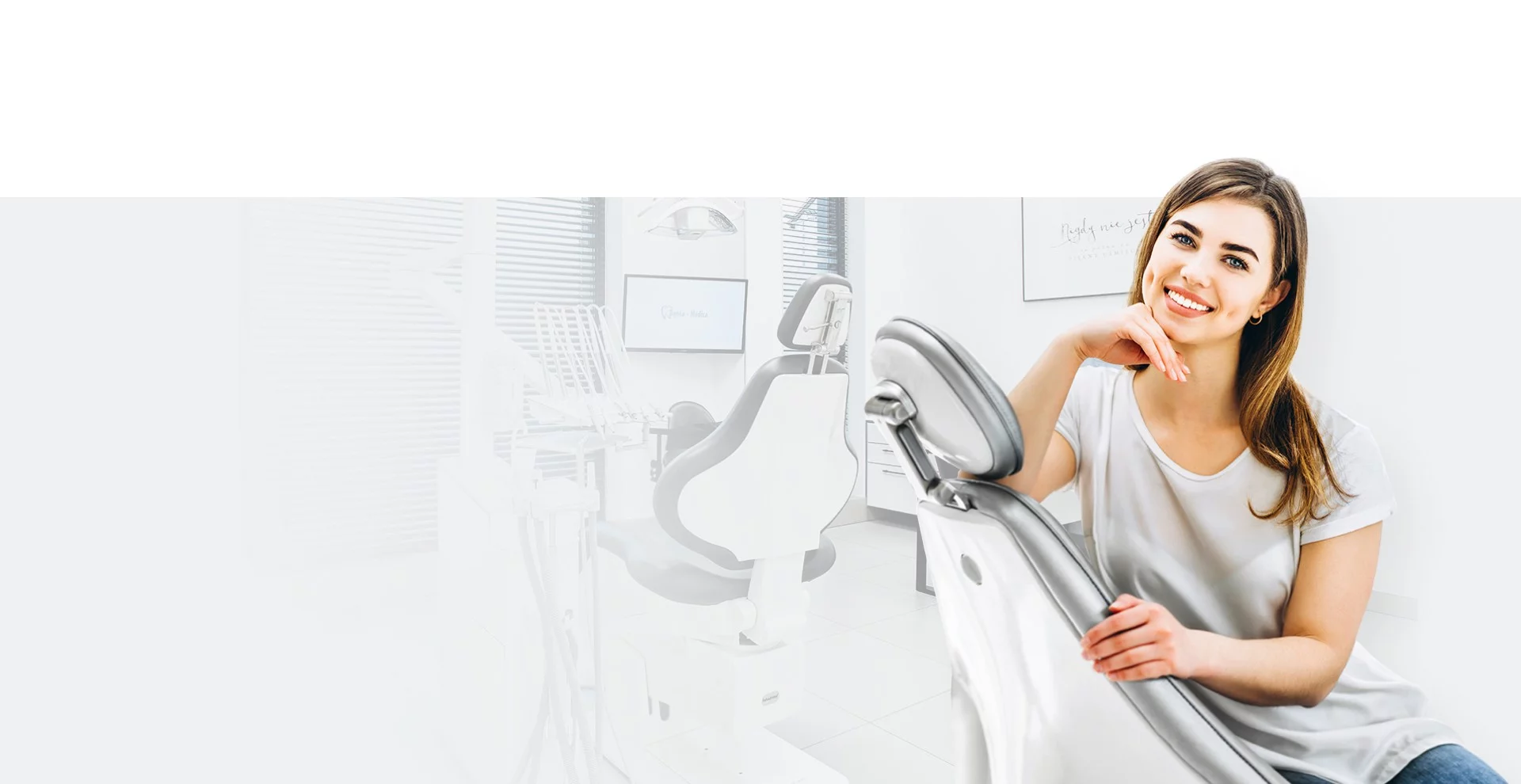Digital radiology
Panoramic radiograph – this is a basic X-ray imaging solution used in dental diagnostics to provide a panoramic view of all teeth, including adjacent anatomical structures. Thanks to digital technology, the image can be viewed on the monitor immediately after being taken. It is an essential diagnostic step before treatment. Panoramic radiograph scanning is safe, with the digital scanner emitting only a minimum amount of radiation when the X-ray of teeth is taken. Based on the radiograph image, we can assess the condition of your teeth and provide you with preliminary consultation and treatment plan already during your first appointment.
Providing top-class services is our Clinic's number one priority. Aware of what the latest technology and science has to offer, we have furnished our X-Ray Lab with state-of-the-art equipment to ensure superior diagnostic capabilities and more effective therapies. Our facility is a one-stop for all diagnostic services through digital radiology and tomography (CBCT) with the use of our state-of-the-art Planmeca ProMax 3D Classic, which minimises radiation. This highly advanced equipment provides unequalled imaging quality with low radiation levels thanks to to X-ray conversion directly into electrical signals.
We provide the following imaging tests:
- 3D (computed tomography)
- 2D (panoramic radiography)
- intra-oral imaging (radiography)
- cephalometry
As part of basic diagnostics, we take panoramic radiographs. These panoramic images show the general condition of all teeth, tooth primordia and surrounding structures, such as jaw and mandible bones and temporomandibular joints. Using these images, dentists can detect many irregularities that are invisible on the outside, such as caries, periapical lesions, unerupted teeth, additional and supernumerary teeth, as well as teeth after improper root canal treatment.
When is a CBCT scan taken?
These images are taken usually when the dentist has concluded that a panoramic scan, which provides a 2D image, will not provide adequate information and that more precise, three-dimensional imaging is required. This imaging technique is used to assess the condition of the jaw, teeth, facial bones, nasal cavity and sinuses. Cone beam computed tomography is a helpful method to diagnose temporomandibular joint disorders, plan the precise placement of dental implants, as well as to identify, measure and treat jaw tumours. It is also used to determine the bone structure and orientation of teeth to allow the dentist to pinpoint the source of pathology and pain.
Cone beam computed tomography is also employed to measure the number of teeth roots and to determine their morphology, as well as to examine root canals. It is a reliable pre-operative measure to assess teeth and their surrounding structures, and to determine the size and range of the lesions through highly precise measurements. CBCT helps to make the right diagnosis and pick suitable treatment.
Cone beam tomography is a method of choice when planning implantations. In addition to showing bone density (as in conventional CT scans), it provides all the information required to perform an implant procedure. Combined with extra-oral scans and dedicated software, it facilitates the design and making of templates for the navigated implantation.
How to prepare for dental radiography?
In most cases teeth radiography and CT does not require any specific preparation.
If you have dentures, let the person taking the image know in advance – metal elements in the denture can distort the image and hinder diagnosis, or lead to misdiagnosis. If you wear permanent hearing aid, you don’t need to mention this before dental radiography – the dentist will know what to expect.
If you wear any accessories on your head, you will need to take them off before a panoramic or CT scan. You will have to take off your earrings, hairpins and necklaces for a few minutes.


